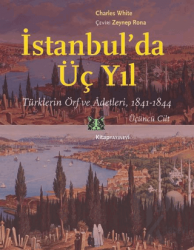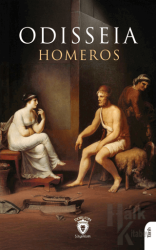A Garden For the Sultan (Ciltli)Gardens and Flowers in the Ottoman Culture

Beautiful beyond description, Professor Emeritus Nurhan Atasoy’s thirty long years collection of notes on Ottoman flowers and gardens have been transformed into a definitive look at the Ottoman garden and the Turkish love of flowers. The beautifully written descriptions and explanatory notes are accompanied by 445 photographs and reproductions.
For the Ottomans, flowers meant passion, tenderness, visual joy. Gardens were a synecdoche for the order of the world and for evocation of paradise. Mehmed II, Conqueror of Istanbul, posed for a miniature painting, not brandishing a sword, not displaying a panoply of power, but smelling a flower.
The Ottomans, according to some foreign observers, had a universal love of flowers. That love suffused the Ottoman visual arts: flower motifs gave vigor to fabric designs, book covers, miniature paintings, illuminations, tiles and textiles, utensils and decorative pieces. Flowerpots were the diadems of windowsills. Ottoman imperial gardens often retained an atavistic nomadic flavor of asymmetry: They seldom possessed the geometric perfection of Alhambra, Medici, Versailles or Shiraz. Theirs was an order of passion. The masterpieces of the genre crowned the Suleymanic age (16th century) and the Tulip Age (18th century)
- Açıklama
Beautiful beyond description, Professor Emeritus Nurhan Atasoy’s thirty long years collection of notes on Ottoman flowers and gardens have been transformed into a definitive look at the Ottoman garden and the Turkish love of flowers. The beautifully written descriptions and explanatory notes are accompanied by 445 photographs and reproductions.
For the Ottomans, flowers meant passion, tenderness, visual joy. Gardens were a synecdoche for the order of the world and for evocation of paradise. Mehmed II, Conqueror of Istanbul, posed for a miniature painting, not brandishing a sword, not displaying a panoply of power, but smelling a flower.
The Ottomans, according to some foreign observers, had a universal love of flowers. That love suffused the Ottoman visual arts: flower motifs gave vigor to fabric designs, book covers, miniature paintings, illuminations, tiles and textiles, utensils and decorative pieces. Flowerpots were the diadems of windowsills. Ottoman imperial gardens often retained an atavistic nomadic flavor of asymmetry: They seldom possessed the geometric perfection of Alhambra, Medici, Versailles or Shiraz. Theirs was an order of passion. The masterpieces of the genre crowned the Suleymanic age (16th century) and the Tulip Age (18th century)
Format:Kitap
- Taksit Seçenekleri
- Axess KartlarTaksit SayısıTaksit tutarıGenel ToplamTek Çekim128,34128,34266,74133,47345,35136,04623,10138,61915,69141,17Finansbank KartlarıTaksit SayısıTaksit tutarıGenel ToplamTek Çekim128,34128,34266,74133,47345,35136,04623,10138,61915,69141,17Bonus KartlarTaksit SayısıTaksit tutarıGenel ToplamTek Çekim128,34128,34266,74133,47345,35136,04623,10138,61915,69141,17Paraf KartlarTaksit SayısıTaksit tutarıGenel ToplamTek Çekim128,34128,34266,74133,47345,35136,04623,10138,61915,69141,17Maximum KartlarTaksit SayısıTaksit tutarıGenel ToplamTek Çekim128,34128,34266,74133,47345,35136,04623,10138,61915,69141,17World KartlarTaksit SayısıTaksit tutarıGenel ToplamTek Çekim128,34128,34266,74133,47345,35136,04623,10138,61915,69141,17Diğer KartlarTaksit SayısıTaksit tutarıGenel ToplamTek Çekim128,34128,342--3--6--9--
- Yorumlar
- Yorum yazBu kitabı henüz kimse eleştirmemiş.
- Yayınevinin Diğer Kitapları
-
-
-
1.150,00TL 885,50TLİNDİRİM %23
-
410,00TL 315,70TLİNDİRİM %23
-
200,00TL 154,00TLİNDİRİM %23
-
410,00TL 315,70TLİNDİRİM %23
-
-
185,00TL 142,45TLİNDİRİM %23
-
-
350,00TL 269,50TLİNDİRİM %23
-
140,00TL 107,80TLİNDİRİM %23
-
-
1.150,00TL 885,50TLİNDİRİM %23
-
410,00TL 315,70TLİNDİRİM %23
-
200,00TL 154,00TLİNDİRİM %23
-
410,00TL 315,70TLİNDİRİM %23
-
-
185,00TL 142,45TLİNDİRİM %23
-
-
350,00TL 269,50TLİNDİRİM %23
-
140,00TL 107,80TLİNDİRİM %23
-
-
1.150,00TL 885,50TLİNDİRİM %23
-
410,00TL 315,70TLİNDİRİM %23
-
200,00TL 154,00TLİNDİRİM %23
-
410,00TL 315,70TLİNDİRİM %23
-
-
185,00TL 142,45TLİNDİRİM %23
-
-
350,00TL 269,50TLİNDİRİM %23
-
140,00TL 107,80TLİNDİRİM %23
-
- Yazarın Diğer Kitapları
-
600,00TL 516,00TLİNDİRİM %14Stokta yok
-
600,00TL 516,00TLİNDİRİM %14Stokta yok
-
2.000,00TL 1.720,00TLİNDİRİM %14Stokta yok
-
-
200,00TL 160,00TLİNDİRİM %20Stokta yok
-
100,00TL 86,00TLİNDİRİM %14Stokta yok
-
-
950,00TL 760,00TLİNDİRİM %20Stokta yok
-
600,00TL 516,00TLİNDİRİM %14Stokta yok
-
2.000,00TL 1.720,00TLİNDİRİM %14Stokta yok
-
-
200,00TL 160,00TLİNDİRİM %20Stokta yok
-
100,00TL 86,00TLİNDİRİM %14Stokta yok
-
-
950,00TL 760,00TLİNDİRİM %20Stokta yok
-
600,00TL 516,00TLİNDİRİM %14Stokta yok
-
2.000,00TL 1.720,00TLİNDİRİM %14Stokta yok
-
-
200,00TL 160,00TLİNDİRİM %20Stokta yok
-
100,00TL 86,00TLİNDİRİM %14Stokta yok
-
-
950,00TL 760,00TLİNDİRİM %20Stokta yok
-
-
570,00TL 456,00TLİNDİRİM %20
-
570,00TL 456,00TLİNDİRİM %20
-
-
-
220,00TL 191,40TLİNDİRİM %13
-
177,00TL 153,99TLİNDİRİM %13
-
-
570,00TL 456,00TLİNDİRİM %20
-
-
-
220,00TL 191,40TLİNDİRİM %13
-
177,00TL 153,99TLİNDİRİM %13
-
-
570,00TL 456,00TLİNDİRİM %20
-
-
-
220,00TL 191,40TLİNDİRİM %13
-
177,00TL 153,99TLİNDİRİM %13
-

























